#historic ship
Explore tagged Tumblr posts
Text
Figurehead of replica 17th century full-rigged pinnace Kalmar Nyckel at her dock on the Christina River, 1/4/25.
#kalmar nyckel#tall ships#tall ship#full rigged ship#historic vessel#historic ship#replica ship#17th century#age of exploration#age of sail#swedish history#american history#new sweden#nautical#maritime#piratecore#video#tales from the sea#I almost joined her crew but didn't
20 notes
·
View notes
Text



Beautiful rainbow at work yesterday
1 note
·
View note
Text
Sound on!
Icebreaker "Stettin"
"Stettin" is a steam powered icebreaker built by the shipyard Stettiner Oderwerke in 1933. She was ordered by the Chamber of Commerce of Stettin (until 1945 Germany, since 1945 Szczecin, Poland). The economy of the city of Stettin strongly depended on the free access of ships to and from the Baltic Sea. Therefore, icebreakers were used to keep the shipping channels free from ice during the winter.
Name: SS Stettin
Ship type: Icebreaker
Builder: Stettiner Oderwerke
Yard number: 769
Launched: 7 September 1933
Out of service: 1981
IMO number: 8882923
Callsign: DBCR
Status: Museum ship
Displacement: 1138 tons
Length: 51.75 m (169 ft 9 in)
Beam: 13.43 m (44 ft 1 in)
Height: 6.4 m (21 ft 0 in)
Draught: 5.40 m (17 ft 9 in)
Speed: 14 knots
Installed power: Steam, 2200 hp (1,600 kW) at 115 rpm
Propulsion: 3-cylinder-expansion steam engine with Stephenson valve gear
Crew: 22
Passengers: 180
For the first time in Germany, the construction was characterized by a new bow design called Runeberg-bow. This new bow design broke the ice using a novel method. It was not broken by the weight of the ship but by a sharp cutting edge. Future development of icebreakers was influenced by this bow form.
Although diesel-engines were already in wide use by 1933, Stettin was equipped with a steam engine. Unlike diesel engines, steam engines can be reversed within a very short period of approximately 3 to 4 seconds. This was important during manoeuvres of the ship under icey conditions in order to liberate the ship if it were to get stuck.
With the special hull design and an engine power with a maximum horsepower of 2200, measured at the cylinders, Stettin was able to break ice up to a thickness of half a meter, at a constant speed of one to two knots. Thicker ice could only be broken by boxing, a process in which the ship ran several attacks until the ice gave way.
The icebreakers of Stettin were handled by the Braeunlich shipping company, which ran a seaside resort ferry service along the coast during the summer. Its other ships had similar engines, so a single technical staff could be employed year round. Stettin was run by a crew of 22 men. This system was in place until the end of World War II.
From 1933 to 1945, Stettin was used in German Navy (Kriegsmarine) service on the Oder River between Stettin and Swinemünde, as well as on the Baltic Sea. On the night of 8 April 1940, Stettin participated in the capture of Copenhagen by participating in a surprise landing of German troops in Copenhagen together with the railway ferry/minelayer Hansestadt Danzig. Stettin is one of two or three surviving vessels of the east Prussia evacuation fleet.
From 1945 on, she was used by the waterway and navigation authorities in Hamburg on the river Elbe.
In 1981, Stettin was slated to be scrapped due to uneconomic costs. However, with the establishment of a development association, thousands of working hours, and support by generous sponsors, the ship was saved. Today, she is a technical culture monument. Her homeport is the museum port of Oevelgoenne in Hamburg, Germany. During summertime, Stettin cruises with invited guests on occasions like "Hamburg port birthday," "Hansesail Rostock," and "Kieler Woche," and is also used as a charter vessel.
0 notes
Text

"Convict Ship Here On Thursday Has Most Interesting History," Kingston Whig-Standard. May 27, 1933. Page 2. ---- Treatment Accorded on Board Was Most Inhuman Drew at Portsmouth Wharf ---- British merchantman, convict ship, floating ship prison, reformatory ship, ammunition store, a scuttled hulk at the bottom of the sea and now floating museum of penal methods is the glamorous history of the sailing vessel "Success" which paused for a few moments yesterday noon at the Portsmouth wharf while on reute for the World Fair.
Claimed to be the oldest and most historic ship afloat and looking essentially the same as when she was built in 1790, the "Success" was truly a link with the past. The only incongruous note was the fussy little tug which towed this ones proud monarch of the seas, sails furled.
A large number of citizens were on hand to greet the boat but were not allowed to go aboard because of Customs regulations. A representative of The Whig-Standard, however, was fortunate enough to be granted permission to inspect the vessel and learn something of her history.
The "Success" was built at Moulmein, in British India, over a century ago, one of the prison ships appropriately nick-named "Ocean-Hells." Massively built throughout of solid Burmese teak, the boat was launched as an armed East India merchantman bristling with guns and handsomely fitted for the reception of Eastern potentates and wealthy traders of the Orient. Was Merchantman The "Sucess" led an honored life broken only by an occasional conflict with a pirate craft until it was converted by the British Government into a convict ship in which to transport prisoners to the penal colony in Australia. For nine years she sailed between England and Australia and then for forty years was used as a floating jail anchored in the harbour at Sydney. Here were confined the unfortunate wretches who at that time wen sentenced to from seven years to life for offenses that would now be considered trivial and petty warranting at most but a small fine.
The tonnage of this famous old boat is 589. and she is 135 feet long with a 30 foot beam. Her solid sides are two feet six inches thick at the bilge and her keelson is a solid teak baulk of tremendous thickness with sister keelsons a little less massive. Today the ship is quite staunch in spite of a deceptive external appearance. The paint is peeling off and some parts of the hull are easily penetrated with a pen-knife but It was demonstrated to The Whig-Standard that the inner timbers of the boat an almost as good as they were in spite of the five years spent underwater.
When used as a transport ship there were no cells in the host as the prisoners were merely shackled together and thrown into the hold. When the boat was made over into a floating jail, strong and gloomy cells were constructed on the 'tween and lower decks. For the first two years of imprisonment the convicts were placed in solitary confinement with thirty pound or heavier leg-irons fastened to them. At the end of that period they were brought to 'tween deck cells when they slept five and six in a tiny cells and were laden down with lighter leg-irons.
These cells were not tally dark but still there was very little light admitted. There were no port-holes in the sides of the vessel and the doors fitted tightly. Light was admitted through the small wooden bars at the top of the door. This light was negligible in any case, however, as there were only five dimly lighted lamps on the 'tween deck. Ironically enough a Bible was placed in each cell although there was not sufficient light to read by.
"Refractory" prisoners were immured throughout the long days and nights in dungeons in the dark depths of the lower deck and never allowed ashore on any pretext. Their only exercise and opportunity of enjoying a breadth of fresh air was restricted to one hour in twenty-four when they were marched from stem to stern on the upper deck. It is said that as they paced the deck during this hour of comparative relaxation, it was no common event for the prisoners to make bold dashes for freedom or death. They scarcely expected to get beyond the cordon of buoys but they were reduced to such a state of desperation that they preferred a watery grave to the treatment received aboard.
Punishment of 'Rusher' When a "rusher" was overtaken in such an attempt he was invariably punished by having a heavy ball iron, weighing 73 pounds attached to his belt by a chain. One of these balls is still preserved aboard the "Success." Leg chains are also on exhibit varying from 7 pounds to 58 pounds in weight.
The corner cells on either side of the lower deck are the dreaded "Black Cells" in which prisoners wen punished by solitary confinement lasting from one to one hundred days. These small and tapering torture chambers measure only two feet eight inches across. The doors fit as tight valves, excluding all air except that what can filter through the perforated iron plate which was placed over the bars above the doors in order to make the hole as dark and oppressive as possible. A stout iron ring is fastened about knee high in the shelving back of the cell and through this ring the right hand of the prisoner was passed and then handcuffed to the left wrist. He was thus prevented from standing upright of lying down and was obliged to stoop or lean against the shelving side of the vessel as it rolled to and fro on the restless waters of the bay.
Was Pitch Dark It was pitch-dark in these cells so it is easy to understand the terrific strain on the eyes when the convict was brought into the bright Australian sunlight of the upper deck for his daily constitutional exercise. It is little wonder that many convicts became blinded or went insane.
A sanitary bucket was placed in each cell and emptied or supposed to be emptied once a day. It did not matter how many men were confined in a cell the allotment was still one bucket. The duty of cleaning these buckets was assigned to one convict whose only chance to do the work came when the men were exercising on the upper deck. There was not enough time, of course, to make the rounds of all cells in the hour and so it was necessary to leave some of the buckets until the next day.
If the prisoners became too mutlnous at any time they were locked in a large cell which had a capacity for twenty convicts. The idea was that, if placed together, they could fight it out among themselves and no harm done. If they still persisted in disturbing the peace, they were quieted with a few shots fired through the bars over their heads.
Constant application of the "cat," imprisonment In the "black hole" and other punishments were the instruments relied upon for producing a reform. The "cat" consisted of nine leather thongs fitted at the ends with leaden pellets the size of a buckshot. The lash was given by a volunteer convict, who was paid a shilling and nine pence for each job as an inducement. Preference was given to the volunteer who was equally strong in the left arm as in the right arm. The lash was delivered with alternate strokes and criss-crossed so as to make a diamond pattern on the culprit's back. If the strokes were of equal strength, the bone was not retched so rapidly and the punishment lasted longer. For the women convicts a smaller "cat," without the leaden ends, was used. Numerous other fiendish and inhuman instruments of torture were also on view on the different decks of the boat.
After the "cat" the convict was thrown into a compulsory bath filled with sea-water and bathed in order to prevent blood-poisoning. There are records of five or six instance when men were drowned in the bath, but whether they fell merely from exhaustion and were not rescued In time or whether they committed suicide in order to escape further punishment cannot be ascertained.
Medical Attention A prison doctor visited the ship once a week and never oftener regardless of what medical attention was needed. If a convict stricken with some disease in the afternoon, after the doctor had paid his weekly visit that morning, he was forced to wait an entire week before he received treatment. It is said that on the occasion of one visit of the doctor, three men wen found dead in their cells.
In 1857, the disclosure that had been made of the brutal and scarcely believable treatment meted out to the prisoners created a fierce outcry in Australia, amounting almost to revolt against the Government and resulted in the abandonment of the hulk system. For some years later the "Success" was used as a women's prison, then she became successively a reformatory ship and an ammunition store. Later all the hulks were ordered to be sold on the express condition that they were to be broken up and their associations lost to the recollection of the people of Australia. By a clerical error, however, that condition did not appear upon the terms of salt of the "Success," as a result she remains the only British convict ship afloat on the seven seas. In 1885 the old ship was scuttled and sunk in Sydney harbor. She remained under water for five years and was then raised to be exhibited. It Is claimed that her visitors have numbered over 20,000,000 people.
In 1912 she attempted what was perhaps the greatest feat in all her remarkable career: to make the passage across the Atlantic Ocean under her own sail unaccompanied by a tug or steamer. The project was laughed to scorn by nearly every man alive who had ever sailed the sea ships. It was said that it was Impossible that this old hulk a century and a quarter old could once more brave the seas did as she did in her halcyon days. A crew of adventurous spirits was found to man the boat, however, and on the very day that the ill-fated 'Titanic' sailed, they hoisted sail and took her out of Glason Dock near the port of Liverpool. Ninety-six days later the surprised populace of Boston harbor was able to welcome the staunch old craft which staggered Into port proving that she was nearly as good she ever was.
Couldn't Stick It The captain of the tells many interesting stories about his ship in which he takes a very evident pride. One story concerns a convict who had served fourteen years in San Quentin prison and who wagered he could stay in a cell for one week under the conditions of a century ago. The wager was accepted for Its publicity value and the ex-convict was placed in a cell and fed and clothed under the same conditions that existed when the ship was a floating jail. The man stuck it out for five days and then asked for his freedom, as he could not stand it any longer. He said he feared for his reason.
Kingston's glimpse of this famous old boat was all too brief. Coming at a time when the local Penitentiary is so much in the public eye, it was a glorious chance to compare prison methods of a hundred years ago with the conditions against which the convicts are now in rebellion. More than one citizen voiced regret at the fact that the opportunity was not given for a detailed public inspection and it is to be hoped that the schedule of the "Success" will permit her to stop here on the return voyage.
[AL: The connection in the last paragraph - that the convict riot of 1932 at Kingston Penitentiary, the ongoing trials of the leaders, the growing criticism of penal methods - and the history of the prison hulk is fascinating to me. The article's thrust as a kind of Whiggish history of incarceration - once, we had a terrible prison, but now, it isn't so bad - is very clearly trying to undermine criticism of Canadian prisons in 1933.]
#kingston ontario#historic ship#convict ship#sailing ship#great depression in canada#prison hulk#australian history#australia in the british empire#penal colony#prison history#solitary confinement#1932 kp riot#1933 prisoner trials#penal reform#sydney
0 notes
Text

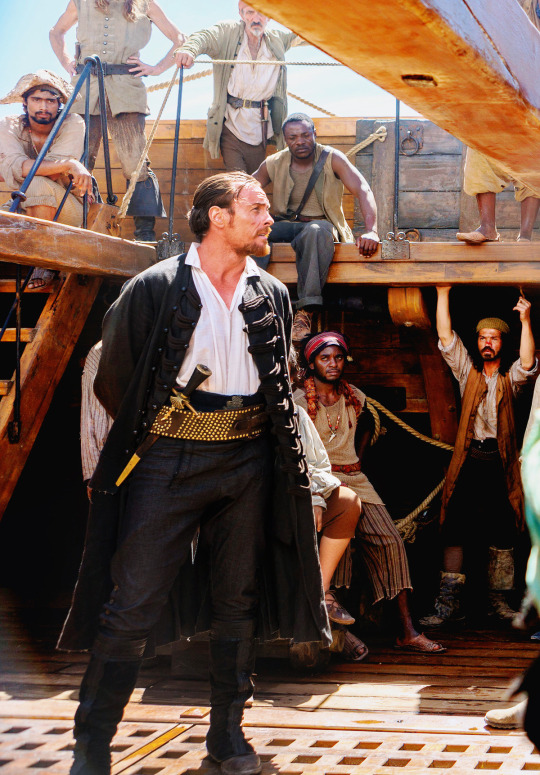
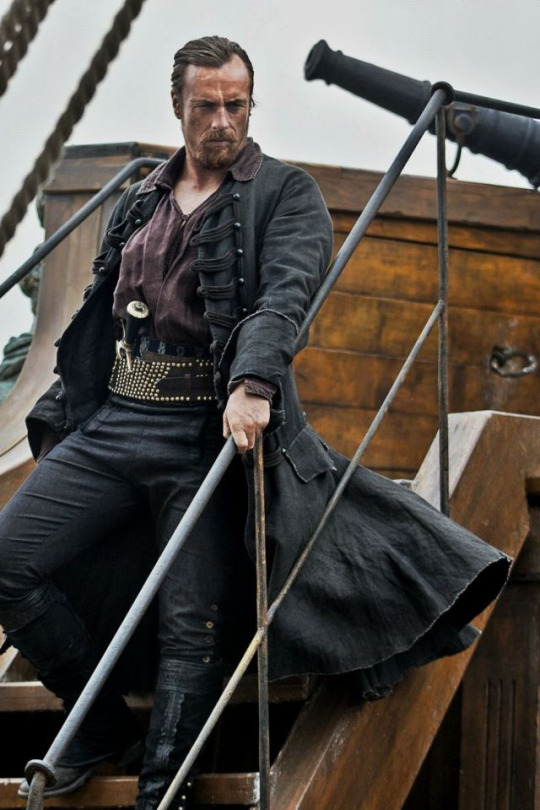



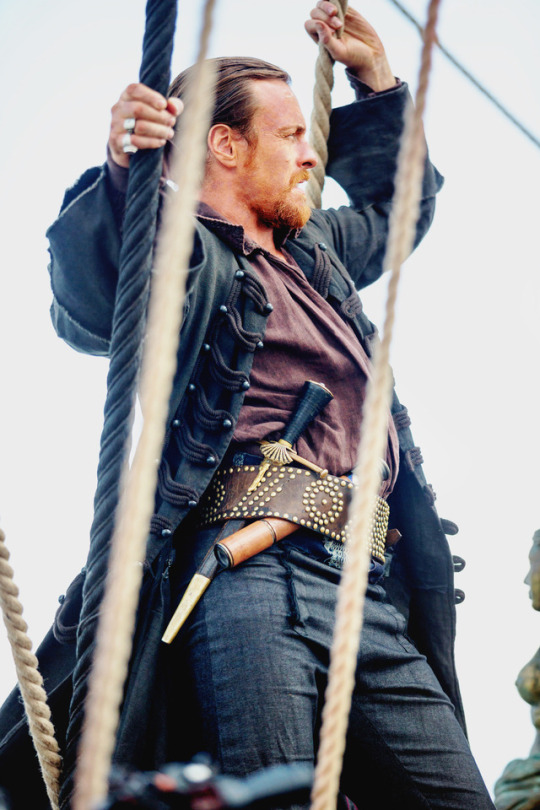
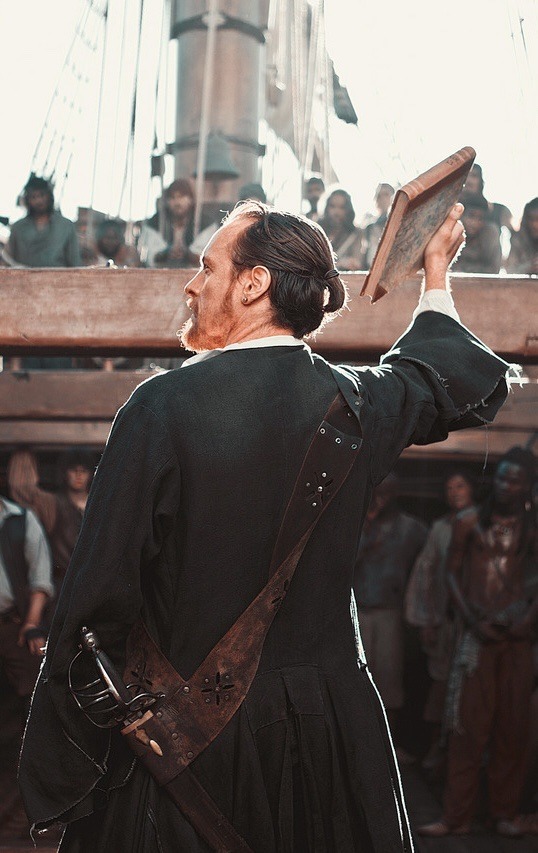
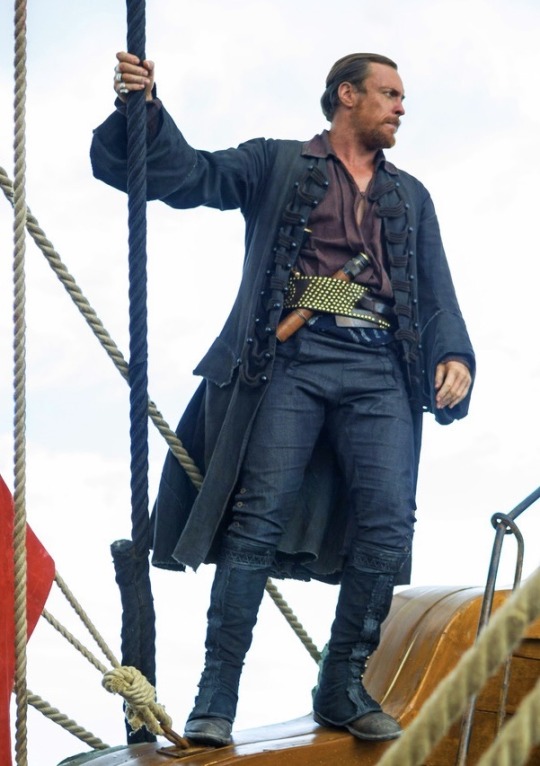
historical costume appreciation: captain flint's dark coat in season one of black sails
#black sails#captain flint#james flint#james mccgraw#toby stephens#costumes#costume#historical clothing#historical costuming#coats#1700s#18th century#age of sail#maritime#nautical#pirates#pirate#coat#ship#aesthetic#flint
2K notes
·
View notes
Text
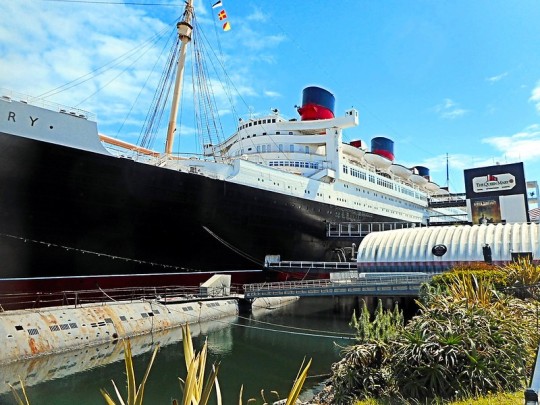
Queen Mary
#Luxury liner#Historic ship#Dock#long beach#los angeles county#california#photo#digital#original photographers
0 notes
Text
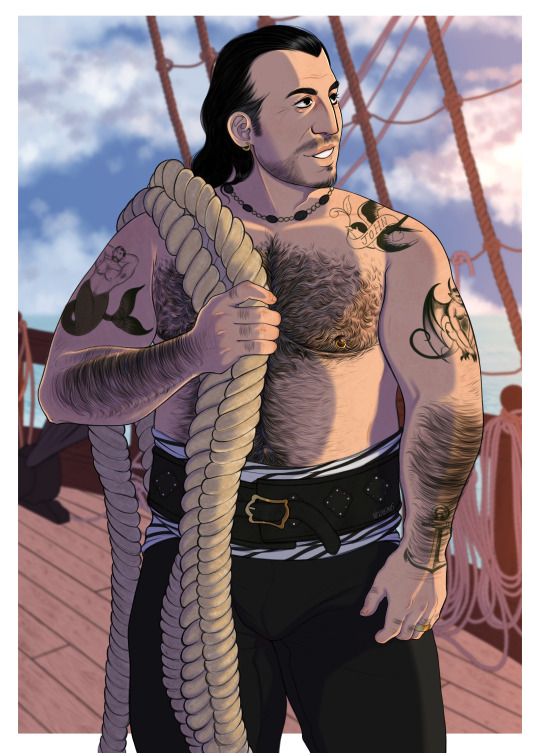
Sailor Nikolai, loyal first mate of Captain John Price ⚓🐻
Bonus alternate versions under keep reading (no bg and lineart only)


#cod#cod nikolai#nikolai cod#call of duty#good lord this is finally done#hope you guys like it#I'm really trying to spend more time on my art and not rush things and I hope you can see the difference <3#Which historical period is he from you ask ?#Well you see he's from *THROWS POCKET SAND IN YOUR EYES AND RUNS AWAY*#I got inspired by outfits from black sails so hey who knows#Made him even bigger for this. Nik deserves to be a beautiful strong fat man who could lift anyone with one hand#anyway I will try to work on ship captain price next#I have spent hours trying to pick between the version with background and without background btw#Might as well post both#my art
398 notes
·
View notes
Text


Do not stand at my grave and cry; I am not there. I did not die.
Clare Harner, Immortality (1934)
#James Clark Ross#Francis Crozier#Rossier#The Terror#AMC The Terror#(.fandom | .amc terror)#(.character | .francis crozier)#(.character | .james clark ross)#(.ship | .rossier)#[[Was thinking about historical Ross & Crozier again and made myself sad]]#[[So you have to suffer the consequences]]
236 notes
·
View notes
Text

"yOu CaNt ShIp BoTh LaMs AnD hAmLiZa" stfu stfu stfu stfu stfu stfu
#john laurens#alexander hamilton#lams#historical lams#stfu I don't rlly ship them but its ok bc mom found the yaoi ahem steph#artists on tumblr
266 notes
·
View notes
Note
Hi! Do you have a list of historical f/f romances? I have read all historical f/f by Olivia Waite, Annick Trent, KJ Charles, Cat Sebastian, and Jess Everlee, and i can’t seem to find any others! (Also read Freya Marske’s historical fantasy). I love historical queer romance and I don’t mind reading mainly m/m (or other queer pairings) but I’d really like to get some more f/f in the mix!
Well you've mentioned the big names in this ask (and mentioned Sarah Waters in your second ask) so I asked around on my main first and received two recs from @strinak which were The High Priestess by Parhelion on AO3 (it was originally a novel published by Torquere) and Romancing the Inventor by Gail Carriger.
There are some historicals here under the ship type f/f tag, though some might be considered f/nb as well as I can recall.
I've also recced a shorter historical f/f here which is also under that tag. And have read some on AO3 as well, though the only ones I can think of offhand were written by KannaOphelia
But if anyone here has any more, feel free to comment or reblog with a comment (or submit it as a post, so I can officially tag it.)
405 notes
·
View notes
Text
Today's ride—the historic Chesapeake Bay buyboat Mildred Belle.
#we did a crew exchange with her and it was lovely!#mildred belle#historic ship#historic vessel#age of steam#early 20th century#fishing vessel#chesapeake bay#maritime history#nautical history#tall ships america#maritime#nautical#fishing boat#fishing boats#living classrooms#tales from the sea#once again actually from the river#two different rivers today!
20 notes
·
View notes
Text

the brig Lady Washington - Washington state's tall ship (and also my friends' house)
all hand drawn by me on procreate
523 notes
·
View notes
Text
Historical Crush AU
When Damian was younger he was told of a being that is a threat to the League that had appeared throughout history. It was Danny, dealing with his Time God Chores. Damian never told anyone that he had a crush on the being when he was younger, wishing that a hero would come and save him.
So to say he was surprised that his childhood crush was introduced as a new Justice League member was an understatement.
#danny phantom#dcu#dcxdp#dp + dc#dp x dc crossover#danny fenton#damian wayne#dead serious#dead serious ship#damian wayne x danny fenton#justice league#historical crush au
750 notes
·
View notes
Text

"Convict Ship Sailed In the Harbor Today," Kingston Whig-Standard. May 25, 1933. Page 3. ---- The old convict ship, "Success," claimed to be the oldest and most historic ship afloat, paid a brief visit to Kingston this morning en route to the World's Fair at Chicago. The ship tied up at the Sin-Mac wharf in Portsmouth and a large number of citizens took advantage of the opportunity to see the famous boat although she was not open for general inspection. The "Success" was towed here from Portland, Maine, where she had been on exhibition for some time, It made a pretty sight floating on the placid waters of the harbor.
0 notes
Text


The Wasp and the Serapis in Boston Harbor at Night by Charles Dorman Robinson | Shipwreck by Knud Baade
#art#artist#artblr#artists#painting#oil on canvas#oil painting#art gallery#art community#art blog#ocean#oceancore#sea#seacore#aesthetic#classical art#art history#historical painting#ship#fine art
323 notes
·
View notes
Text

Wdym it's not halloween yet 🤨
#fight club#stdshipping#my beloved moots oicuperp and papestreetlocal came up with the ship name huehuehue#the narrator fight club#marla singer#tyler durden#artists on tumblr#don't point any historical inconsistencies I just wanna have funnnn 💥💥#digital art#illustration#obligatory fruday 13 post#my tummy ache is killing me this might ne the last post#au where..............kidding I just dressed them up for sillies#did them on my samsung notes so the quality is kinda blehh#and I couldn't flip the canvas so I don't wanna know how wrong the proportions are#osjhghdhshs#dying now byee 😭#martyryo
220 notes
·
View notes